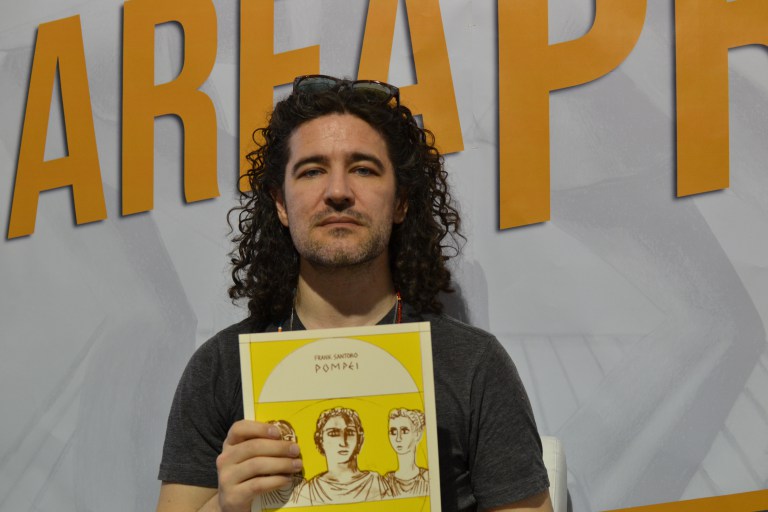An interview with Frank Santoro and a review of Pompei (001 Edizioni, 2018) were published on C4 Comic in June of 2018. They are excerpted from below (we will have complete translations from the Italian to English soon!)

Noman Alani has an interview with Frank up on C4 Comic, part of the C4 Chatter column. The interview was conducted during the Naples Comicon 2018. Here is part of the interview:
C4C: How was the choice of Pompeii created to set your comic book?
FS: I was living in New York during the attack on the Twin Towers of September 11th. When the planes hit the buildings we were all motionless to stare at the scene. I remember that by the time the towers collapsed and an immense cloud of smoke rose, I thought that we could relive an experience similar to that in Pompeii. Obviously it didn’t happen, but it left me thinking for a long time. Some time after I visited the ruins of Pompeii and so I decided to tell something about where I come from and that is such a powerful concentrate of stories and sensations different for every visitor. In my intentions, at a time when everyone was facing the world of graphic novels, it was also to create a product accessible to all and not hermetic and in this the fact of talking about one of the most famous archaeological sites in the world was definitely helpful. I could concentrate so much more on what I wanted to tell seriously, behind the costumes and facts that are known there were people with their stories and there was the pathos.
Read the whole interview HERE!
Also on C4 Comic there is a review of Pompei by Luca Parri. Titled Pompei, between classic and theoretical experimentalism, it begins:
Almost as if it were a virtual return to the homeland of Ameriana Memory, Pompeii of Frank Santoro lands on Italian soil five years after its original American publication. And we can only rejoice in knowing that a comic that treats an episode so tragic but at the same time founding of our cultural heritage, realized with wise love by a foreigner, has finally arrived in our bookstores.
But it is not only for the engaging and convincing celebration of Classical culture Mediterranean (and Italian in particular) that this volume should be recognized as one of the most important comics of the Decade; The Book of Santoro is also fundamental for a theoretical-scientific progress within the Ninth art.
The review continues:
The research and the educational process to a markedly theoretical conception of the comic is a question which concerns and concerns Santoro both as a cartoonist but also and above all as theorist, scholar and teacher. Pompeiè therefore almost to be understood as a wise omni-comprehensive of all that the author has been able to collect and elaborate in several years of research and practice alternating three figures (the reader, the teacher and the author) until they are converged towards a single entity ; The individual parts communicate and coexist by influencing each other. All that the American has been able to learn about the harmonies, the rhythms and the emphasis that can be evoked in an unintentional way, but then meticulously and mathematically desired, recur in the Centoquarantaquattro pages of his comic strip.
